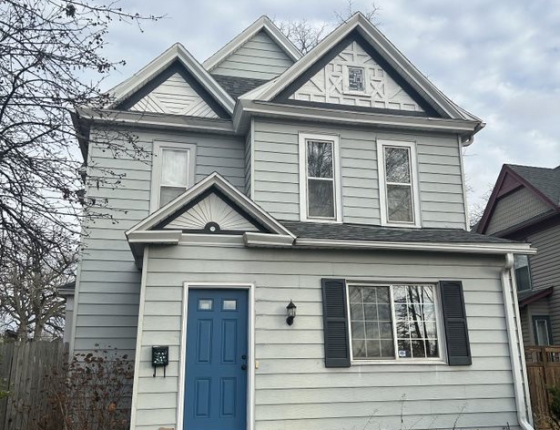Background
Center for Energy and Environment (CEE) partnered with Xcel Energy and Pacific Northwest National Laboratory (PNNL) to evaluate interior storm windows as an energy savings measure. Funding for this field testing was provided in part by the U.S. Department of Energy’s Storm Window and Insulating Panel (SWIP) Campaign to develop cost-effective energy saving technologies. The home was selected through an energy audit as a candidate that could benefit from storm window improvement. New interior storm windows were installed in the home, which had old and leaky exterior storm windows estimated to be 30–50 years old. Unlike traditional window replacements, interior storm windows are custom-designed inserts that press into the room side of existing window frames. Because the inserts do not require additional hardware, they do not damage existing windows.
Benefits
In cold climates like Minnesota, exterior storm windows are commonly installed outside single- or double-pane primary windows. While they offer some insulation benefits, their effectiveness diminishes over time due to quality of installation and the breakdown of seals and gaskets. For many old windows, the energy lost from air leakage significantly surpasses the energy lost from conduction of heat through the window. The installation of new interior storm windows improves window performance by adding a second air space inside the primary window and increases air tightness through gaskets around the perimeter of the product.
"...my heating bill has decreased, and I can actually feel a difference temperature-wise when comparing the old windows to the same windows with Indow inserts."
Bridget, homeowner
Testing and Installation
Interior storm windows are installed inside a house within the frame of the existing window, creating an additional air space between the interior storm window and the existing primary window. For this project, the size of the window frame was precisely measured, and storm windows were installed with a flexible gasket around the entire perimeter. This ensures a snug press fit installation and tight air sealing once installed.
The old exterior storm windows were left in place so that after installing the interior storm windows, the total window construction had three panes, arranged as (from indoors to outdoors): new interior storm window – air space – primary window – air space – old exterior storm window.
To measure the change in performance of the house’s windows, a blower door test was performed before and after installation of the interior storm windows. In this test, the front doorway is filled with a membrane and a large fan. Air was blown out of the house at a static pressure of 50 pascals, and the airflow volume was measured (CFM50) to calculate the level of whole-house air leakage.
Results
Before installation, the whole house had a relatively high CFM50 of 5162 for a 3792 sq. ft. home. After installation, the CFM50 was reduced by 962 to 4200, or an 18.6% reduction. For comparison, a house that has professionally retrofitted wall or attic insulation can expect a typical leakage reduction of around 15%.
The homeowner noted a measurement time and installation time of 10–30 minutes per window. Additionally, they noted equivalent aesthetics when viewed from inside or outside, improved clarity through the windows, improved thermal comfort near the windows, reduced condensation, and significantly reduced noise coming through the windows. With no major renovation required, the homeowners were able to keep the historic, stained-glass features to preserve the home’s style while maximizing comfort and efficiency. The pilot study demonstrates how adding interior storm windows can be an effective retrofit in homes with poorly air-sealed windows. Following this project, Xcel Energy will conduct a thorough analysis of the energy savings and cost-effectiveness associated with the measure.
